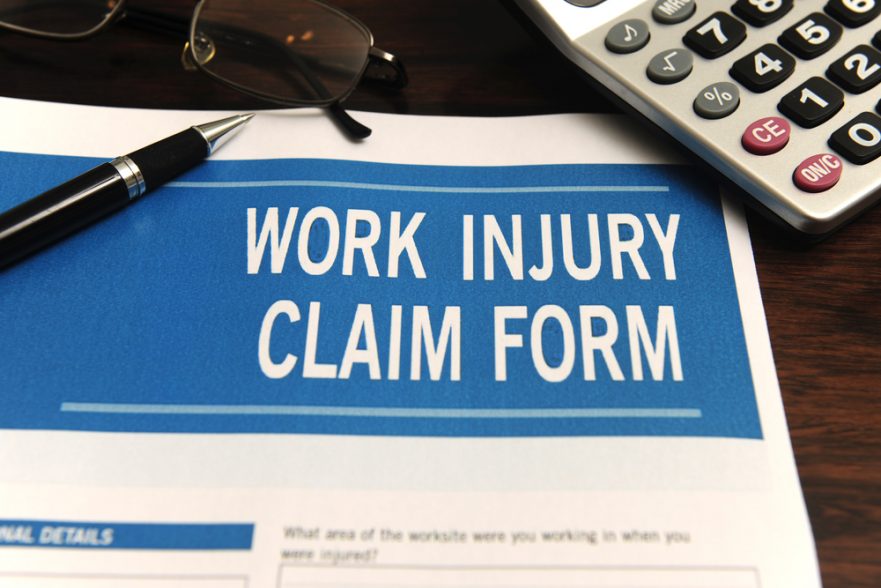If you are like most people, you go to work each day without giving much thought, if any, to the possibility that you could suffer an injury on the job. According to the National Safety Council, an American worker is injured every seven seconds. The latest data from the U.S. Department of Labor shows that 2.8 million non-fatal workplace illnesses and injuries occurred during a one-year period. Emergency services workers, such as police officers and firefighters, lead all occupations as far as suffering injuries that require them to miss time from work, but injuries at work can happen to anyone, regardless of how safe the occupation might appear. Here are common types of workplace injuries and their causes, to help you avoid them.
Soft tissue injuries
Overexertion, which is the lifting or lowering of heavy objects, is the leading cause of workplace injuries. The National Safety Council reports that 33.54% of workplace injuries are the result of overexertion.
Improperly lifting a heavy piece of equipment or trying to take a box of supplies down from a shelf can cause soft tissue overstretching or tearing of muscles, tendons, and ligaments. A sprain or strain might heal on its own, while more serious overexertion injuries, such as a torn muscle or torn ligament, could require surgery to repair.
Repetitive stress injuries
Repetitive stress is another form of overexertion. Workers in the construction industry who use power tools that subject their hands to excess vibration and workers in any industry requiring them to spend hours typing at computer keyboards can develop repetitive stress injuries.
Common repetitive stress injuries include:
- Carpal tunnel syndrome.
- Tendonitis.
- Bursitis.
Injuries caused by repetitive use may cause pain, swelling, stiffness, or numbness in the affected area. Taking frequent breaks is one method for preventing repetitive stress injuries. Another method is to make adjustments to the manner in which you perform the tasks associated with your job, to avoid or limit the activities that could cause an injury of this type.
Burn injuries
Burn injuries can be life threatening. They produce severe pain and cause disfiguring scars that may require multiple surgeries and skin grafts. Common causes of burn injuries include:
- Exposure to hot liquids, open flames, explosions, and hot surfaces.
- Exposure to acids, corrosive agents, and other chemicals.
- Exposure to high-voltage electricity.
The sun is frequently overlooked as a cause of burn injuries at the workplace. Lifeguards, landscapers, construction workers, road workers, and people in other occupations that require them to spend hours working outdoors in the sun should wear hats, long sleeves, and other types of clothing to protect them from exposure. They should also use sunscreen and repeat its application periodically throughout the day.
Exposure to the sun can also cause heat-related illnesses, including:
- Heat exhaustion.
- Heat stroke.
- Cramps.
- Heat rash.
People who must work in hot, sunny weather should drink plenty of water throughout the day and take frequent breaks in an air-conditioned or shady location.
Head, neck, and back injuries
Slipping on a wet floor, falling from a ladder or scaffolding, being struck by a construction vehicle, and other common workplace accidents could cause injury to a person’s head, neck, and back in the following ways:
- Concussion.
- Traumatic brain injury.
- Skull and facial fractures and lacerations.
- Herniated discs.
- Fracture or other damage to the spinal cord.
Depending upon their severity, injuries to the head, neck, or back can cause permanent disability and paralysis or death. Wearing protective headgear at construction sites, ensuring that ladders and scaffolds are secure and stable before climbing on them, and cleaning up debris and spills from floor surfaces are a few ways to prevent these types of accidents and injuries.
Broken bones and amputation
People working on or around construction equipment or in manufacturing jobs involving the use of dangerous machinery could suffer broken bones or the loss of limbs. Punch presses, compacting machinery, and saws can crush bones or sever limbs.
Workers must pay attention and not get distracted when working on or around dangerous equipment or machinery. Loose clothing that could become entangled in machinery should be avoided.
Compensation is available for workplace injuries
You have the right to make a claim for workers’ compensation benefits to pay for your medical care and lost earnings, as well as compensating you for any partial or full disability that might be caused by a workplace injury. Workers’ compensation systems in most states make it easy for injured workers to apply for benefits without the necessity of suing their employers.
If your injury is caused by the negligence of a third party other than your employer, you could have the right to sue to recover damages. For example, if a distracted motorist ignores warning cones and hits you while you are working as part of a road construction crew, you could have the right to sue the driver for negligence. A personal injury lawyer with knowledge of workers’ compensation laws is your best source for legal advice and guidance about how to proceed.

